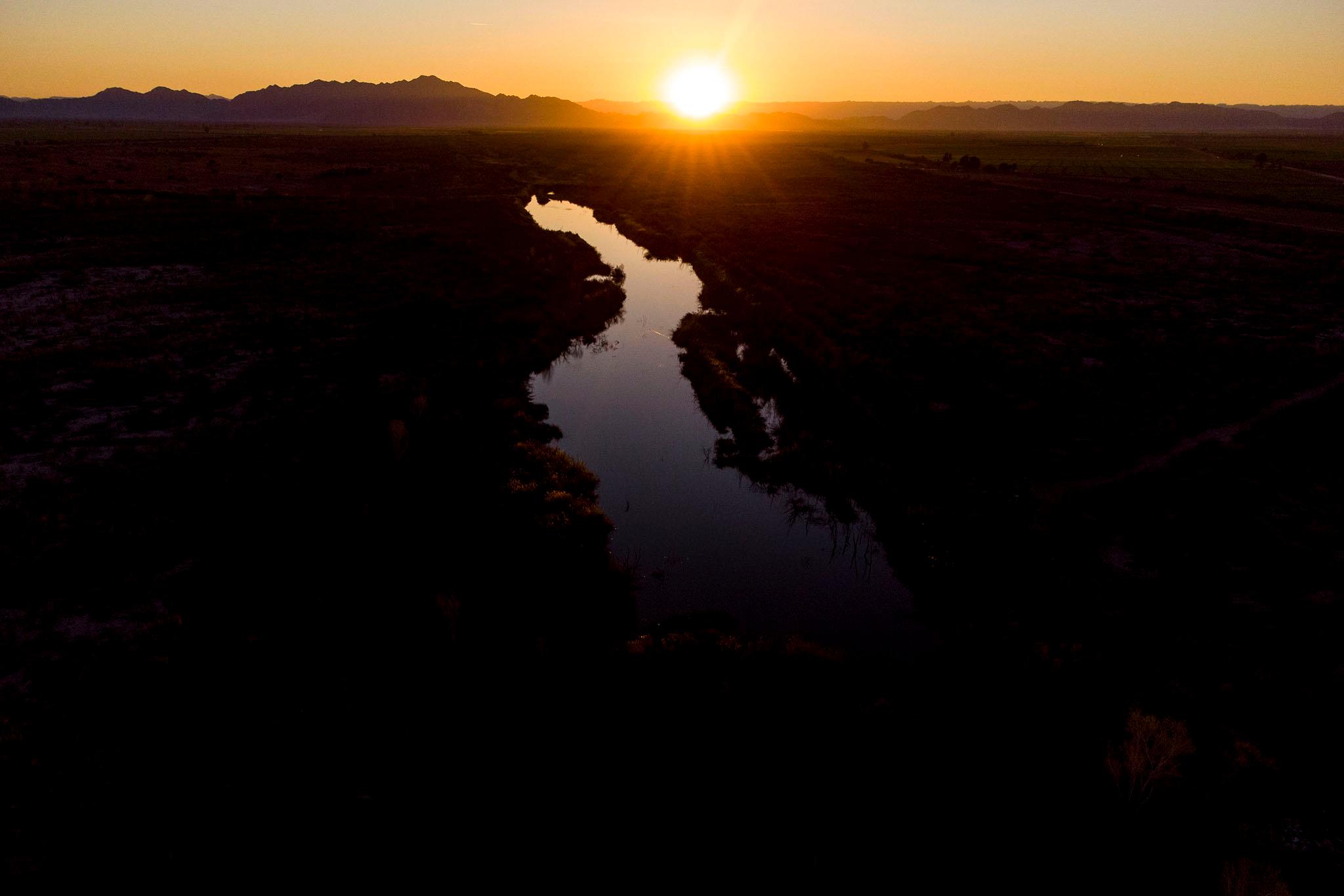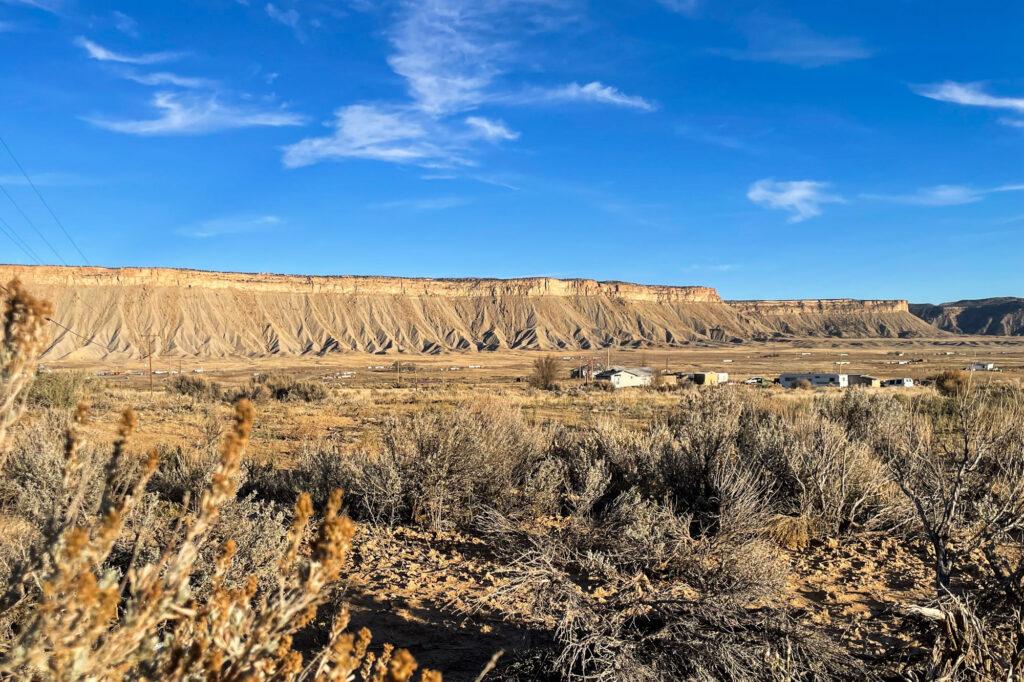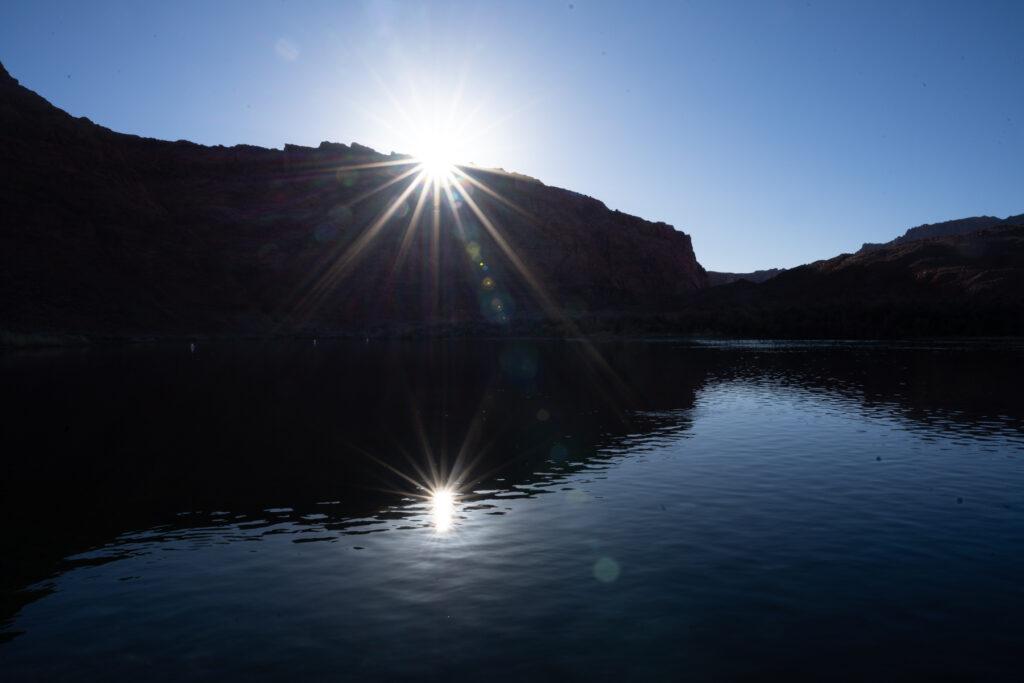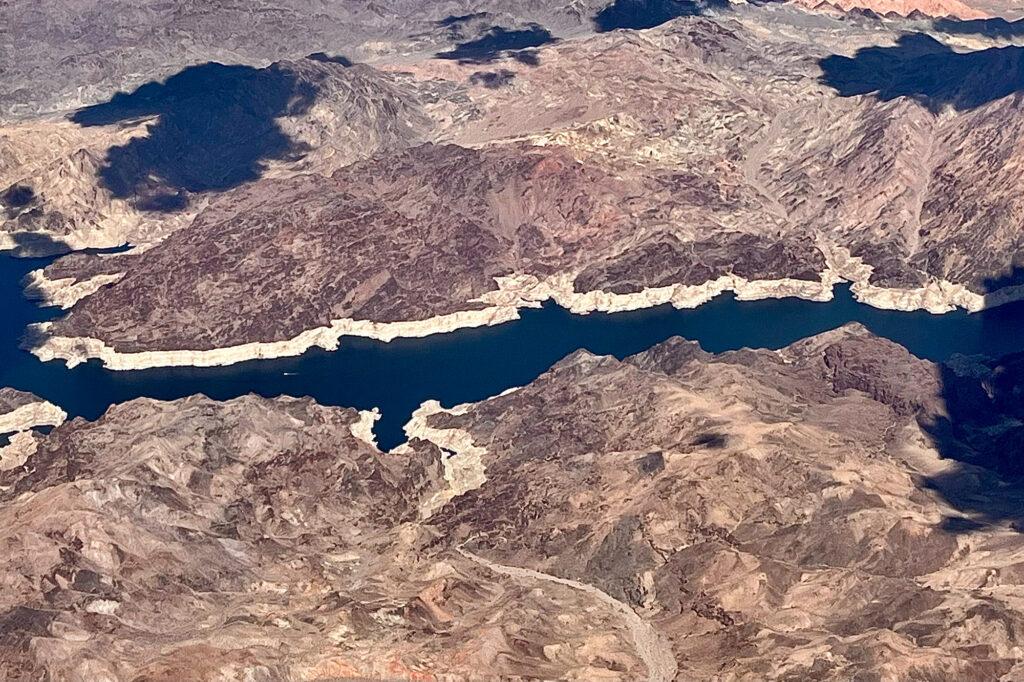
Colorado lawmakers will start their annual session in January with a new set of recommendations on how to help Colorado weather prolonged drought and meet its commitments to delivering water that originates as snowpack in the Rockies downstream to other states, tribes and Mexico.
Lawmakers created the Colorado River Drought Task Force, a group representing conservation groups, farming and ranching, tribes, cities and other entities, earlier this year, to get recommendations on specific concepts and tools to better manage water. It met for about five months and wrapped up its work Friday.
The recommendations come as the seven Colorado River states have started negotiating a long-term agreement on how to divvy up the shrinking supply of water in the basin. Collectively, they’ve been using more water than the river naturally provides year-to-year, and flows are down about a quarter over historical levels.
The state task force’s recommendations focus on areas where the legislature can spend money or make the rules for transferring or saving water more flexible.
“I think we accomplished quite a bit,” said Aaron Citron, a leader in the Colorado office of The Nature Conservancy and a member of the task force.
He said the group brought new public engagement to the pressing issue of how Colorado can live with less water in the future and was unusual in its high level of tribal participation.
“There's no silver bullet to any of these issues, but we can think about silver buckshot — lots of smaller, but still critical, elements that can get us towards a meaningful solution,” he added.
But the recommendations do not push forward some of the ideas that environmental groups and experts say are the most effective solutions available to reduce water usage in the Colorado River region and harden cities to the effects of climate change, including programs that pay farmers to use less water, or investing in large-scale water recycling and reuse projects.
“Overall, they fell short in meeting the moment,” said Kelly Nordini, CEO of Conservation Colorado, who was not a member of the task force. She said the recommendations don’t go far enough to deal with the drought that’s plagued the state and the river basin for 22 years or the future effects of climate change.
However, she praised lawmakers for setting up the task force and trying to be proactive, and she applauded one recommendation from the group: changing state law to expand water rights holders’ ability to loan water to benefit the environment.
What the task force recommends — and where it stops short
Several recommendations to the legislature involve money. For example, the task force says the state should increase funding available to upgrade water infrastructure; fund a study of invasive species and their effects on water resources; and more than double the money in a fund that pays people to voluntarily remove ornamental grass used for lawns.
The task force wants lawmakers to bring funding for turf removal to $5 million a year, putting Colorado on par with Utah — but still significantly behind Nevada, which has what water experts say is the most aggressive and successful program in the country.
A sub-group of the task force focused on Indigenous water rights also recommends new state funding for the Ute Mountain Ute and Southern Ute nations to study how much water they’re entitled to, and what compensation could look like for them to contribute that water to the Colorado River system.
Through a series of court cases and agreements with the federal government, it’s estimated that dozens of tribal nations in the American Southwest collectively hold rights to a quarter of the water in the Colorado River. In many cases, including on the Ute Mountain Ute and Southern Ute reservations, tribal communities don’t have the infrastructure in place to use all of that water.
The tribes’ unused water is used by others along the Colorado River, and in times of drought, those non-tribal entities sometimes get paid to conserve it. That needs to be rectified, said Peter Ortego, general counsel for the Ute Mountain Ute tribe.

Ortego also said the tribe will someday have the infrastructure to use all their water, which would restrict the ability to grow in other parts of the state. Therefore, he said it’s in the state’s interest to figure out how to fairly compensate the tribes if the state wants to count their water as part of its allocation.
Overall, he said the task force successfully made state legislators more aware of tribal water issues and the challenges tribes face.
Other recommendations ask for more flexibility in water rights rules. For example, the task force endorses expanding a program that allows farmers to lease, loan or trade water when they temporarily don’t use water they legally have rights to.
Through the Indigenous issues sub-group, the Ute Mountain Ute tribe requested support from the state legislature to figure out how the tribe’s cultural significance of water can be accounted for in discussions about maintaining adequate flows in Colorado’s rivers.
It will be up to lawmakers whether to spend money on anything the task force recommended or to turn any of the recommendations into bill proposals that get a hearing at the state Capitol.
No decision on demand management
The task force did not significantly move Colorado forward in creating a program to compensate farmers for voluntarily using less water, a concept that in some iterations is known as demand management or conserved consumptive use. Agriculture uses more than 70 percent of water in the Colorado River, which is why water experts say the approach is critical to conservation efforts.
The majority of members decided not to recommend or require such a program because they didn’t want to constrain Colorado in its negotiations with other states. Additionally, they said in their final report that states in the Colorado River’s lower basin — California and Arizona — should commit to permanently using less water before Colorado plans additional reductions.
Nordini from Conservation Colorado is disappointed the task force didn’t forward another recommendation that would’ve allowed industrial water users to loan or lease water for the benefit of the environment and recreation. Particularly during the decades in which fossil fuel producers are transitioning away from coal, such a rule could allow them to hold onto their water rights while temporarily benefitting their local communities, she said.

Nordini said her group will continue to work with the legislature and the governor’s office to fine-tune such a rule, as well as one that would allow the state to prioritize the environment in its decisions of when to send water downstream to other states and tribes.
The task force discussed those policies but didn’t formally endorse them.
The task force also discussed, but did not design, a program or request funding to expand water reuse — a process where a water district intentionally cleans its used water and sends it back to taps.
Recently, metropolitan Los Angeles committed to substantially increasing its reuse and recycling to cut down on the amount of Colorado River water it uses. Colorado has legal restrictions on reuse that California doesn’t, but there is still an opportunity to expand reuse in Colorado, following the lead of cities like Aurora and Castle Rock to get more certainty about where water will come from in times of drought.
Task force participants said they largely ran out of time to fully explore reuse.
“I didn't see that as any sort of rejection of the concept itself,” said Alexandra Davis from Aurora Water, who represented Front Range cities on the task force. “It's going to be a big deal, and it's going to be a significant mechanism for cities to meet their needs going forward."
The urgency of the moment
Much of the West experienced a wet spring and early summer, which raised levels in Southwestern reservoirs. Those reservoirs serve as a water savings account for the region, and the rising levels eased immediate concerns about running out of water.
But dry conditions have started to spread across many states, including Colorado — which is now seeing signs of "snow drought," according to a new analysis from the National Drought Mitigation Center.
“With critical reservoir storage on the Colorado River hovering at or below 35 percent of capacity, we are only one dry year away from returning to the state of crisis we saw last year at this time,” Andy Mueller, head of the Colorado River Water Conservation District, said in the task force report.

Against that backdrop, representatives from the seven U.S. states that rely on the Colorado River have started negotiations for how they’ll divide up resources in 2026 and beyond. Those discussions are tense, as the states have to accept that they have collectively been overusing the water naturally available in the river and drawing down savings in the reservoirs. They also need to figure out how to give tribes a much more substantial say in what happens to the water.
Citron from the Nature Conservancy, who served on the state task force, believes Colorado provides a good example to the rest of the region.
“We're very used to living within our means, and I think that continues to be our message to the rest of the basin that we need to rely on what's annually available,” he said.
Nordini said most importantly, Colorado needs to figure out how to use less water and protect Colorado’s natural assets.
“There's a long history of talking about water in the West, but not doing a lot about it,” she added. “Change is hard, and so it takes time.”









